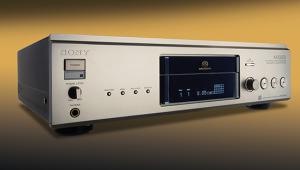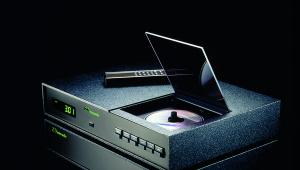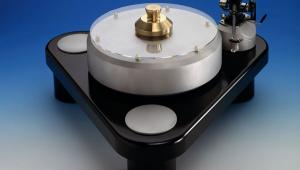Prelude & Fugue Page 2
Setting-Up
Customers with £515 to spend don't, I suspect, do their own setting-up. Even so, this is definitely a tweaker's arm, especially as it can be adjusted for tracking angle during play, and VTA experimentation is too much to resist. Happily, the main fixing shaft bolts into the standard Linn Basik/lttok pattern. Of the six outer holes, those at 2 o'clock or 4 o'clock will give the necessary overhang. The maker's template gives a radius of 16mm, suggesting that the end of the cartridge mount should be aligned with this, overhanging the turntable spindle.
Breaking The Rules
The template also gives unusual 59.5mm/118mm alignment points – compare these with the more usual 66/120.9mm points – though in practice, either sets work equally well. A further breaking of the rules is Mr Firebaugh's instruction that bias should be determined on a blank disc. Again, although contrary to published findings for conventional pivoted arms, this does audibly give the finest sound quality. Counterclockwise turns of the thumbwheel reduce the tendency to swing inwards. Blank discs are now hard to find: HFS test discs, the old Decca SKL4861, and Shure TT101 (but not TT110) have small bands, and three-side Electrola sets sometimes have a plain unstamped fourth side (what luxury!).

The arm is difficult to level just by eye. Having done this, packing – plastic, paper thicknesses, etc – can be slid under the base as a reference, and small deviations from horizontal can be auditioned. The soundstage focus and general dynamic 'vitality' of the sound will confirm when the optimum VTA for your cartridge has been attained.
Another time-consuming aspect is ascertaining correct downforce. Unlike a freely pivoting arm, the WTA takes seconds to lower, or drift upwards from the stylus balance pad. The two counterweights – 55g stainless steel and 20g aluminium – are secured by nylon screws and have a nasty habit of shifting when being locked. (Remember: wrong downforce affects VTA, and tonal quality.) The two weights may be tried singly, or in combination. The use of the weights together helps set-up, as the inner one can be locked to give a visual reference point for fine adjustment of the supplementary weight.
Azimuth can be centred during play, but one must allow the arm to re-settle. Don't use a mirror, but the reflective surface of a disc with ungrooved areas, eg, Karajan/DG Pines Of Rome, Beethoven 4, with some frontal lighting. Azimuth is best set statically!
Sound Quality
Do I leave a blank for this paragraph ie, is it just to say the WTA has no sound quality? So far I've heard it on the latest Linn LP12 and, briefly, in the importer's studio with a vdH EMT and the German Audiolabor turntable. I do know Acoustic Arts hoped the damping might accommodate some of the characteristics of the cheaper decks, to make an affordable package. Alas, the WTA threw into relief turntable sonic signatures with adroitness.

What you can do is to give a bloom, or spaciousness to cartridge performance, and alter subjective speed perception, by twinning the counterweights. This 'bloom' is not the unfortunate effect you may have encountered in the past with off-centred silicone damping troughs, or headshell cushioning riders such as the Z-Trak. Every pick-up will sound happier with one arrangement or the other: the Goldbug Clement II sounded better 'slowed', I preferred the Empire MC1000 with a single counterweight while the Garrott-Decca proved more of a puzzle. You have to ask: are these close-miked recordings, and thus the single counterweight is correct, or is the more spacious, distanced soundstage the producer's real intention? Generally, with twinned weights nearer the pivot point I thought there was less blurring within the image, yet the more focused detail perhaps accompanied a small sacrifice in tonal sharpness.
Seamless Sounds
If I say the WTA is superb at low-level resolution, that conveys nothing of the thrill of discovering details in familiar recordings, at the sheer 'musicality' of the way the arm lets percussion sounds fade away so slowly, yet so distinctly. Primarily, this is why I immediately established it in my mind as superseding the Zeta (now within 13% of the WTA cost). On the famous Decca digital first, the VPO/Boskovsky 1979 New Year Day Concert, you can follow the triangle strokes in Pizzicato Polka reverberating on and on, in the Musikvereinsaal acoustic, dwindling to inaudibility – notwithstanding the quite forceful zest of the surrounding string playing.
This kind of subtlety, like another veil lifting within your system, is chopped short on many arms, presumably by energy dissipating at the bearing faces. The flick of an open string, just right of the podium, catches at the imagination, too (just as you want to strangle the moth-balled and furred coughing old lady, later on in the Strauss). lt also conveys that radiant joy in Giulini's conducting of the scherzo of Bruckner's Eighth ('What the birds sing every morning' – Bruno Waiter). It's unique and special.

I just take for granted the seamless quality, from low to high registers. This arm throws up differences between cartridges, or interconnect changes, with immediacy. Garrott-Deccas produce soundstage depth and focus of great detail, stability, and illusory spaciousness; the tracing ability of cartridges is further extended. The WTA reveals the degradation of digitally remastered vs original analogue transfers as well... but I seem to be somewhat alone on this subject. Yes, I do miss the lift/lower facility, even though one develops a knack for noiseless retrieval. The nice curve of the fingerlift properly allows settling into quite narrow scrolls at inner diameters. Having damaged a cartridge in a conventional tonearm, when it bounced across the label, I know the WTA damping will preclude that. Nor will the bearings brinell (develop flats) during cartridge changing!
New Euphony
I look back to the days of fond possession of a Hadock unipivot. I must have used a hectare of Duraglit wadding on it; I'd rewired it, decoupled it with Blu-tak, set the headshell wires in Loctite (the most chic of contemporary tweaks).
I never did figure a way of hanging it on a thread, but I did think about it.
Now Mr Firebaugh shows how. His unconventional design comes in the 'twilight' of the analogue LP, before the dazzle of silver saucers on ley lines from PolyGram mesmerises a new generation into Urban Sax-like posturing. A finely set up WTA brings a new euphony to a black disc collection, from Telarc cannons to Bach canons. You would hardly regret the outlay.


















































